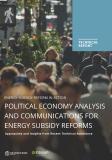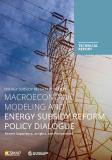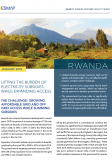Publications
Each year, governments around the world collectively spend billions of dollars subsidizing the production and consumption of electricity, fossil fuels, or district heating. These subsidies cause economywide distortions and encourage excessive and inefficient consumption of energy.
In both developing countries and advanced economies, governments often subsidize energy sources and carriers, ranging from petroleum products such as gasoline, diesel, liquefied gas or kerosene, to electricity or district heating. This practice diverts funding from more pressing priorities such as healthcare, education, the fight against hunger, or supporting renewable energy.
Energy subsidies often are intended to lower energy costs for the poor, but the broad application of price subsidies ends up disproportionately benefiting richer households who consume more energy.
While the case for reforming energy subsidies is clear, implementing such reforms is politically and technically challenging. These reforms require substantial efforts to develop, and success is hard to define, achieve, and maintain.
Building on ESMAP’s Energy Subsidy Reform Assessment Framework (ESRAF) and drawing on recent research plus a decade of experience with country-specific technical assistance, the report consolidates those findings and presents energy subsidy reform practitioners with a series of steps that can be considered while supporting subsidy reform efforts. The steps include gaining a solid understanding of the background, effects, and socio-economic motivations for energy subsidies. The steps suggest developing several reform options, obtaining a clear understanding of the reforms’ effects on stakeholders, and building mitigation measures and benefits for society and the economy into reform design. They also advise to be strategic about timing and sequencing of reform and to communicate meaningfully and clearly with the public about the reforms.
The report was preceded by a series of technical background reports covering a range of topics including macroeconomic modeling, distributional analysis, social protection, and political economy.
From Ambition to Action: Practical Insights on Energy Subsidy Reforms - ESMAP Report (English). Energy Subsidy Reform in Action Series. ESMAP Report. Washington, DC: World Bank. License: Creative Commons Attribution CC BY 3.0 IGO.
https://openknowledge.worldbank.org/entities/publication/f96a67e1-dcb8-40f7-90ed-9622f6e692f5




